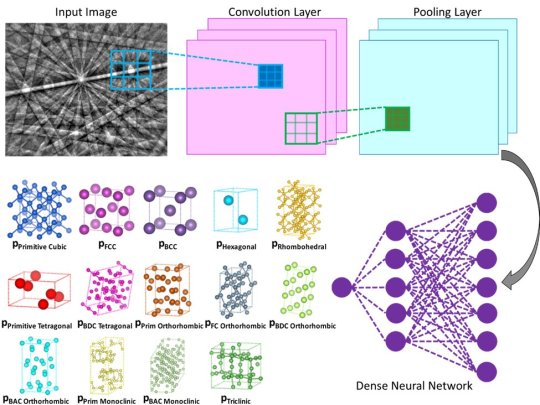#ebsd patterns
Explore tagged Tumblr posts
Text



EBSD pattern formations of SiO2, ZrO2 crystal samples
#my post#science#electron backscatter diffraction#ebsd patterns#kikuchi patterns#diffraction patterns#electron microscopy
0 notes
Text
Price: [price_with_discount] (as of [price_update_date] - Details) [ad_1] This book, first published in 2002, provides an interdisciplinary discussion of magnetic and electronic films and the importance of new materials in magnetic data storage is underlined by the accelerating pace of areal density growth. It covers a wide range of novel materials with data- storage potential. In particular, new work on lithographically-defined nanostructures and nanowires shows exciting possibilities for the future, including patterned media and magnetic logic operations. New work on chemical methods to produce ferromagnetic particles less than 10nm in diameter, with extremely narrow size distributions, indicates promise. Presentations also reflect the growing interest in textural and microstructural control in thin-film technology. Materials systems in which links between crystallographic texture, microstructure and properties are studied including metal films, electronic films including ferroelectrics, and transparent conducting oxides. Presentations display a significant variation in the sophistication of texture-measurement techniques, depending on application and equipment availability. The technique of electron backscatter diffraction (EBSD is strongly featured. Publisher : Cambridge University Press (2 August 2002) Language : English Hardcover : 328 pages ISBN-10 : 1558996575 ISBN-13 : 978-1558996571 Item Weight : 1 kg 900 g Dimensions : 15.88 x 2.54 x 22.86 cm [ad_2]
0 notes
Photo

Machine learning technique speeds up crystal structure determination
Nanoengineers at the University of California San Diego have developed a computer-based method that could make it less labor-intensive to determine the crystal structures of various materials and molecules, including alloys, proteins and pharmaceuticals. The method uses a machine learning algorithm, similar to the type used in facial recognition and self-driving cars, to independently analyze electron diffraction patterns, and do so with at least 95% accuracy.
The work is published in the Jan. 31 issue of Science.
A team led by UC San Diego nanoengineering professor Kenneth Vecchio and his Ph.D. student Kevin Kaufmann, who is the first author of the paper, developed the new approach. Their method involves using a scanning electron microscope (SEM) to collect electron backscatter diffraction (EBSD) patterns. Compared to other electron diffraction techniques, such as those in transmission electron microscopy (TEM), SEM-based EBSD can be performed on large samples and analyzed at multiple length scales. This provides local sub-micron information mapped to centimeter scales. For example, a modern EBSD system enables determination of fine-scale grain structures, crystal orientations, relative residual stress or strain, and other information in a single scan of the sample.
Read more.
#Materials Science#Science#Crystal structure#Computational materials science#Materials Characterization#UC San Diego#Electron backscatter diffraction#EBSD
56 notes
·
View notes
Photo




Fire Obsidian is an iridescent variety of obsidian from Glass Buttes, Oregon.
James Miller, a geologist in Redmond, Washington, is an avid “knapper,” meaning he chips stone to make tools, the very old-fashioned way. During a search for material, he came across some obsidian that shimmered colorfully in direct light. It didn’t look like striped rainbow obsidian, but instead hosted flame-like patterns in the glass. Wanting to know more, he sent a few samples to George Rossman and Chi Ma for their spectroscopic studies.
Under bright light, fire obsidian reflects brilliantly colored streaks resembling an iridescent oil slick. When thinned to a translucent blade, dark, wispy flames can be seen through the glass. Rossman suspected the layers of “fire” were made of tiny particles that increased the refractive index in the layer, giving rise to another manifestation of thin-film interference. “Out of curiosity, we said, ‘Well, let’s take a look at it and find out what it is,’” he recalls. At 100,000 times magnification, they found their answer—a wave of white, snowflake-like nanoparticles were suspended in the glass. Electron back-scatter diffraction (EBSD) analyses revealed that these flakes were the mineral magnetite, an iron oxide.
--The Secret Lives of Minerals, Elizabeth Nadin
The black obsidian without thin layers from Glass Buttes contains evenly distributed inclusions of magnetite. The darker the black obsidian, the more numerous the magnetite crystals or the larger the crystals are in size. Where the magnetite inclusions concentrate to form thin layers of a submicrometric thickness, the “fire” coloration may appear. Measurements of the layer thickness and the estimated index of refraction indicate that some of the layers are of an appropriate thickness to cause thin-film interference. The layers have both a higher calculated index of refraction than the host obsidian and have a thickness slightly less than the wavelength of visible light. Such conditions are ideally suited to giving interference colors similar to those from a thin slick of oil on water.
--The Origin of Color in “Fire” Obsidian, Chi Ma and George R. Rossman
#fire obsidian#obsidian#geology#science#spectrometry#thin films#nanominerology#minerals#gems#magnetite#iron oxide
216 notes
·
View notes
Text
DBS3896 Residential Support Officer
You will have experience of working with EBSD within a residential children’s home. Contract Type: Permanent | Working Pattern: Full time | Salary: £21,589 - £22,911 pa | Internal Job: No | http://dlvr.it/RVLPMz NEJobs
0 notes